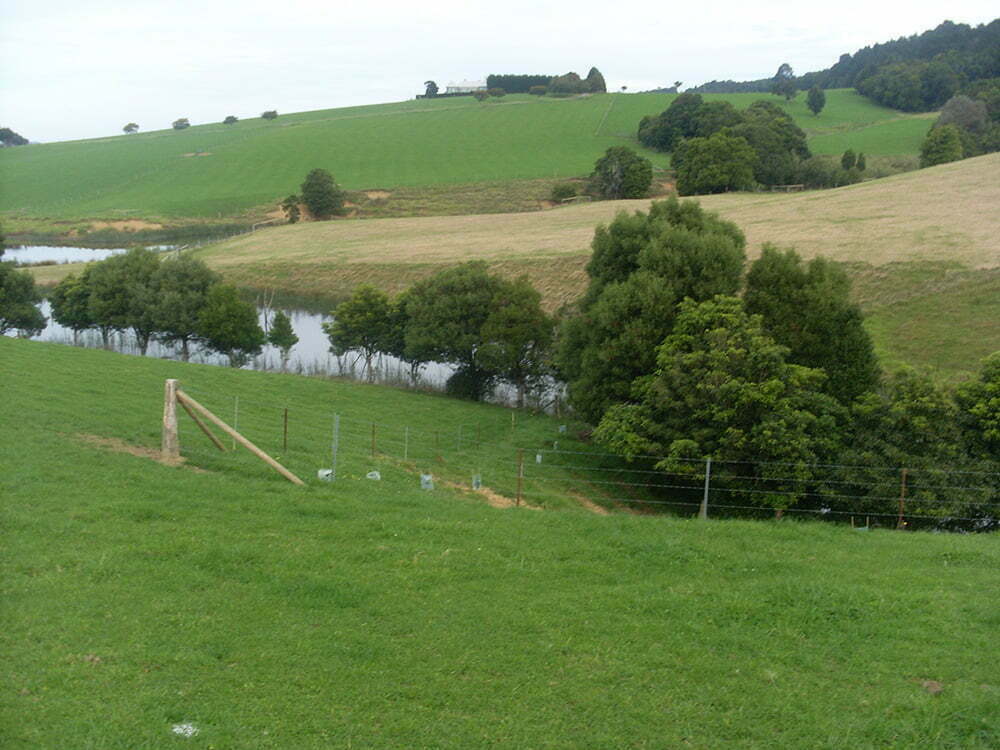 Many rural properties include or adjoin at least one creek, stream or river and, therefore, private and public landholders manage much of the national ‘riparian estate’, whether as freehold or lease. This section of the CD examines how riparian land can be managed to increase agricultural production while also meeting environmental goals.
Many rural properties include or adjoin at least one creek, stream or river and, therefore, private and public landholders manage much of the national ‘riparian estate’, whether as freehold or lease. This section of the CD examines how riparian land can be managed to increase agricultural production while also meeting environmental goals.
Riparian vegetation can protect adjacent agricultural production. It buffers crops and pastures from the wind and windborne material, and provides habitat for beneficial animals, especially pollinating insects and predators of pests. Livestock whose access to riparian areas is managed carefully can shelter from harsh weather and graze understorey grasses and shrubs. Windbreaks, shade and shelter can have significant effects on crop growth, pasture production, and animal health and growth rates.
Riparian vegetation itself can form part of the farm’s production system, supplying wood products like timber, poles, posts, broombrush, firewood and charcoal, or non-wood products like seeds, essential oils, foliage, honey, bushfoods and pharmaceuticals. These products may be sold or used directly on the farm. Riparian areas and their streams and creeks are also special places for people, and are often highly valued for recreation, their beauty, and as a place to relax and enjoy nature; they contribute to the capital value of the property.
In the future, some of the natural functions of riparian land and its vegetation, like carbon storage, water filtration and salinity control may form part of the farm’s production system, and be valued and traded as part of an ecosystem services market.
Riparian land can be managed to achieve multiple objectives, for example, agricultural production, bank stabilization, recreation and aesthetic amenity and wildlife.
Our resource pack contains:
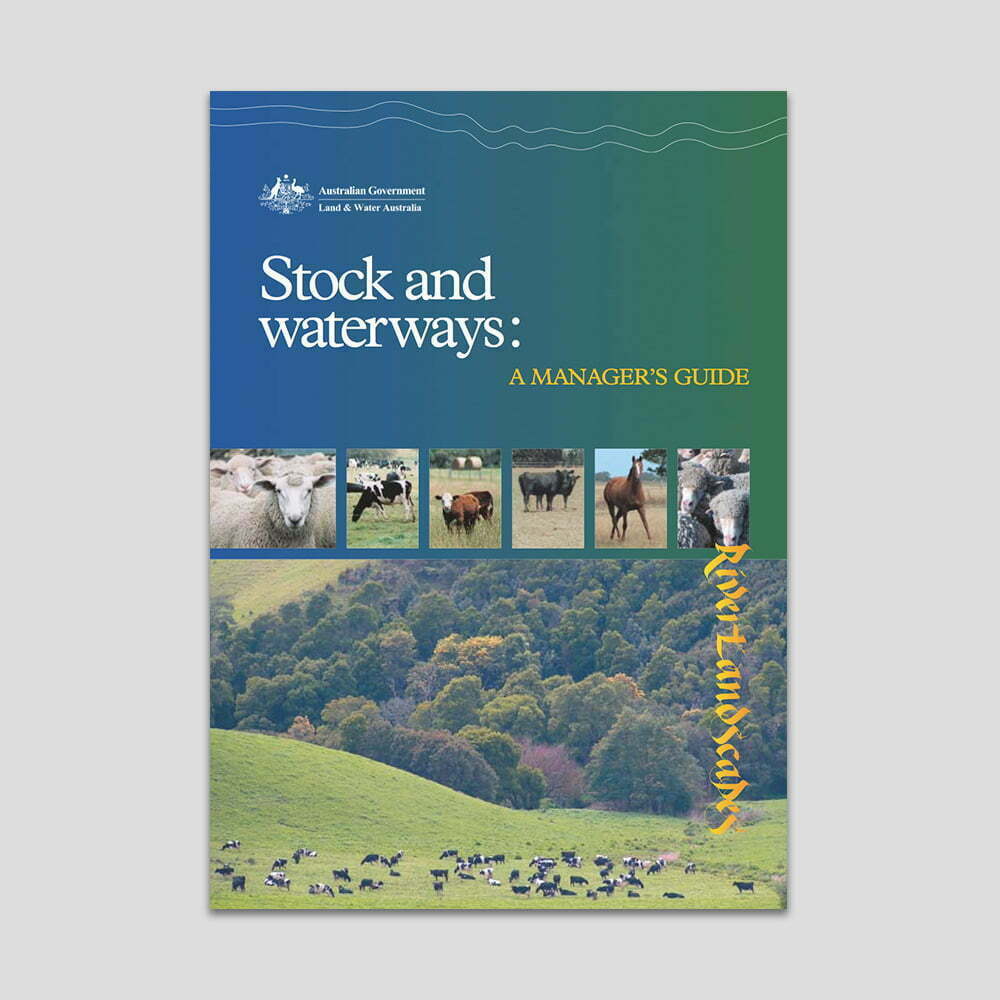
Stock and Waterways: A Managers Guide
Need a line of description here.
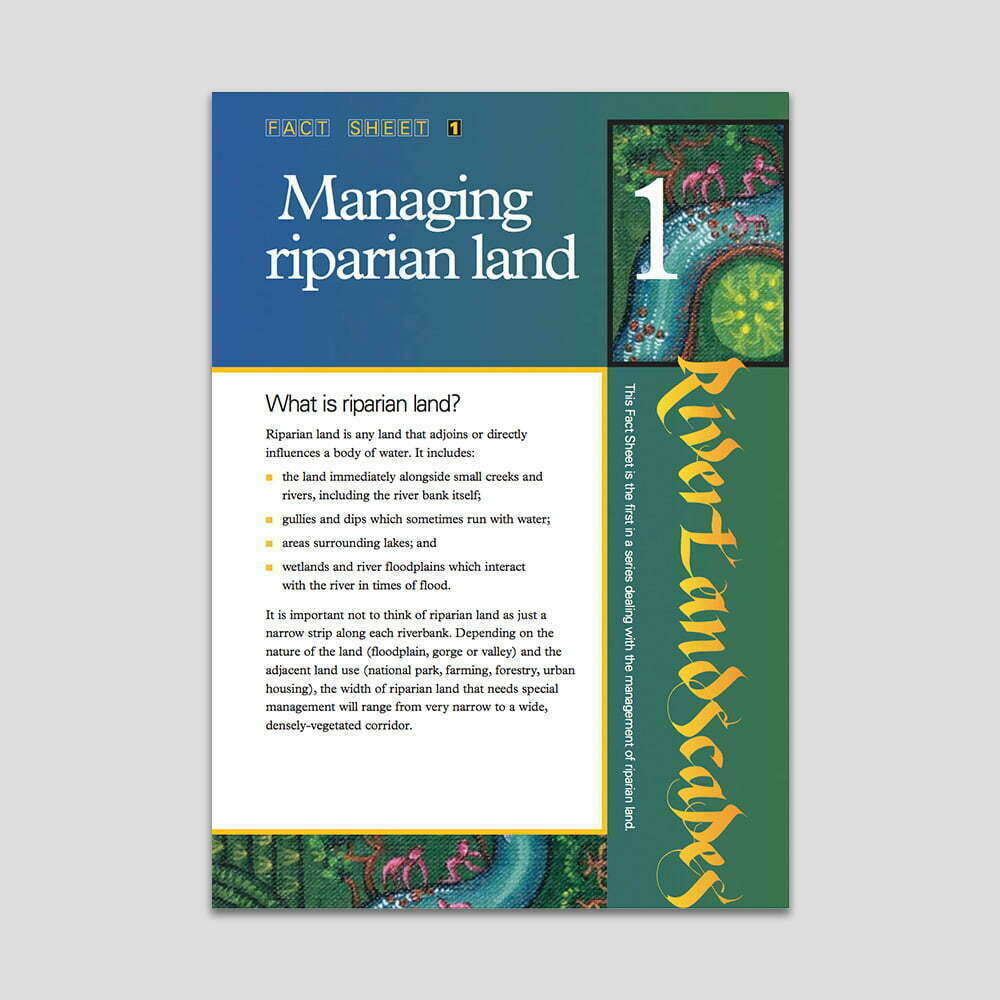
Fact Sheets
Fact sheet 1 – Managing riparian land
Fact sheet 6 – Increasing agricultural productivity

RipRap Magazines
RipRap 11 — Riparian zones – what are they?
RipRap 12 — Managing the riparian zone within a total farm system
RipRap 15 — Seeing is believing: The value of demonstration sites
RipRap 23 — Managing riparian land to achieve multiple objectives
RipRap 31 — Wrapping up riparian
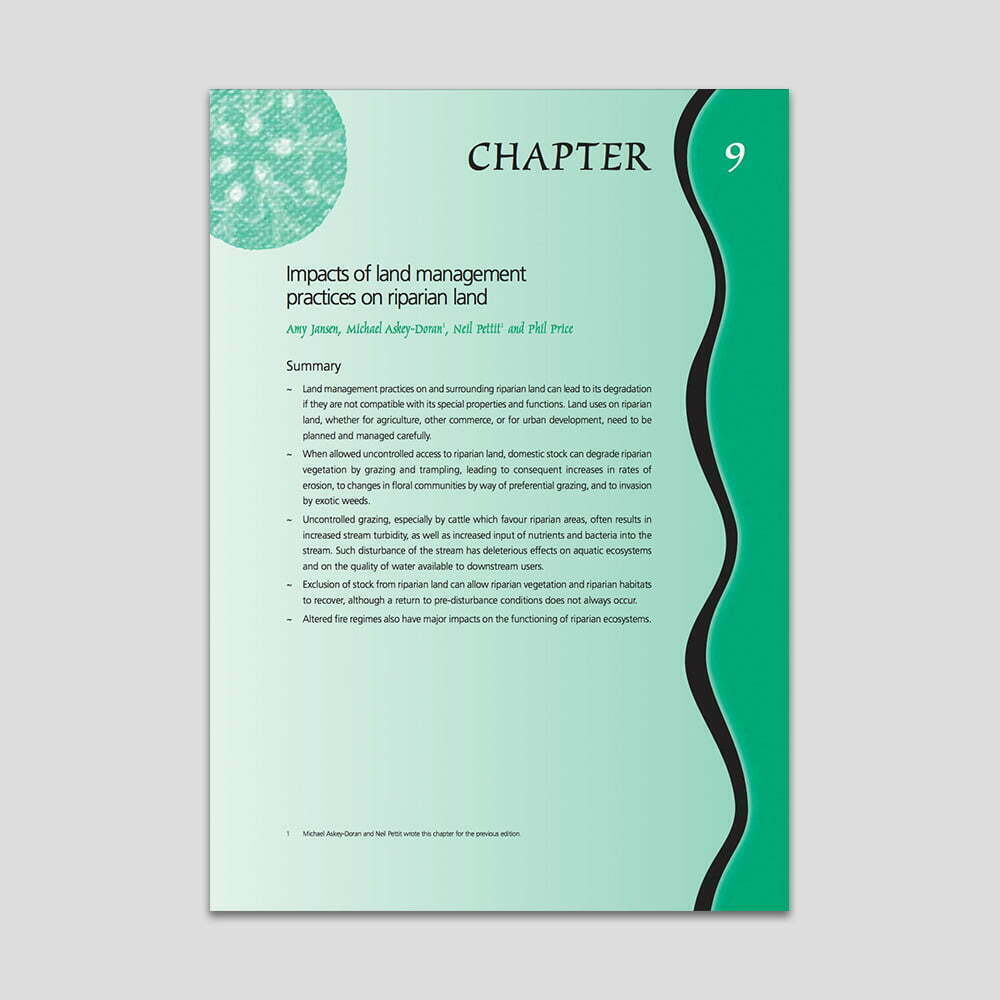
Guidelines and Manuals
Principles for riparian lands management (2007):
Chapter 9 — Impacts of land management practices on riparian land
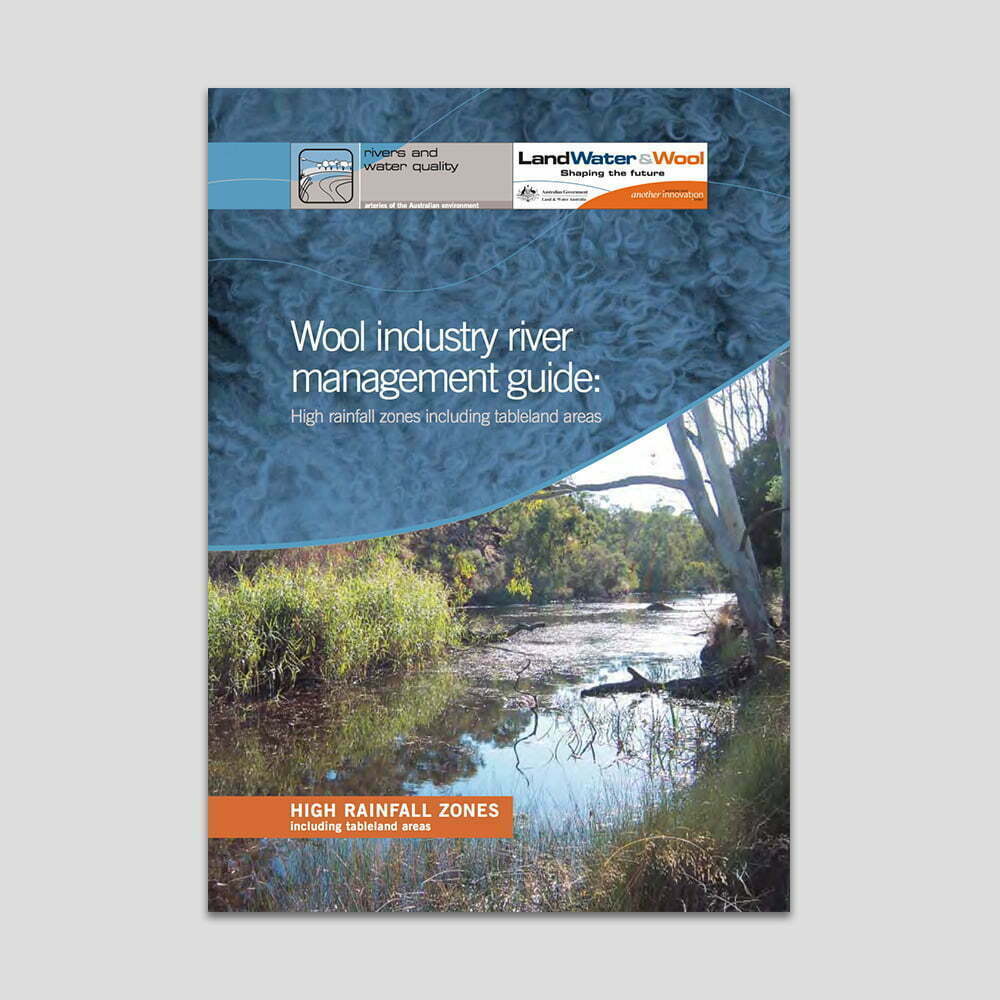
Working With Industry
Wool industry river management guide
– High rainfall zone
– Sheep/wheat zone
Managing riparian lands in the sugar industry
Managing riparian lands in the cotton industry
Managing instream wetlands on wool producing farms
Managing gullies on wool producing farms
Managing creeks and waterways in the southern tablelands of New South Wales: a woolgrowers guide
Managing rivers and streams in Tasmania: a woolgrowers guide
Managing creeks and waterways in South Australia: a woolgrowers guide
Preventing creek erosion
Managing weeds in riparian areas
Insights: case studies on how farmers are successfully managing rivers, streams and creeks on wool properties
Are my waterways in good condition?
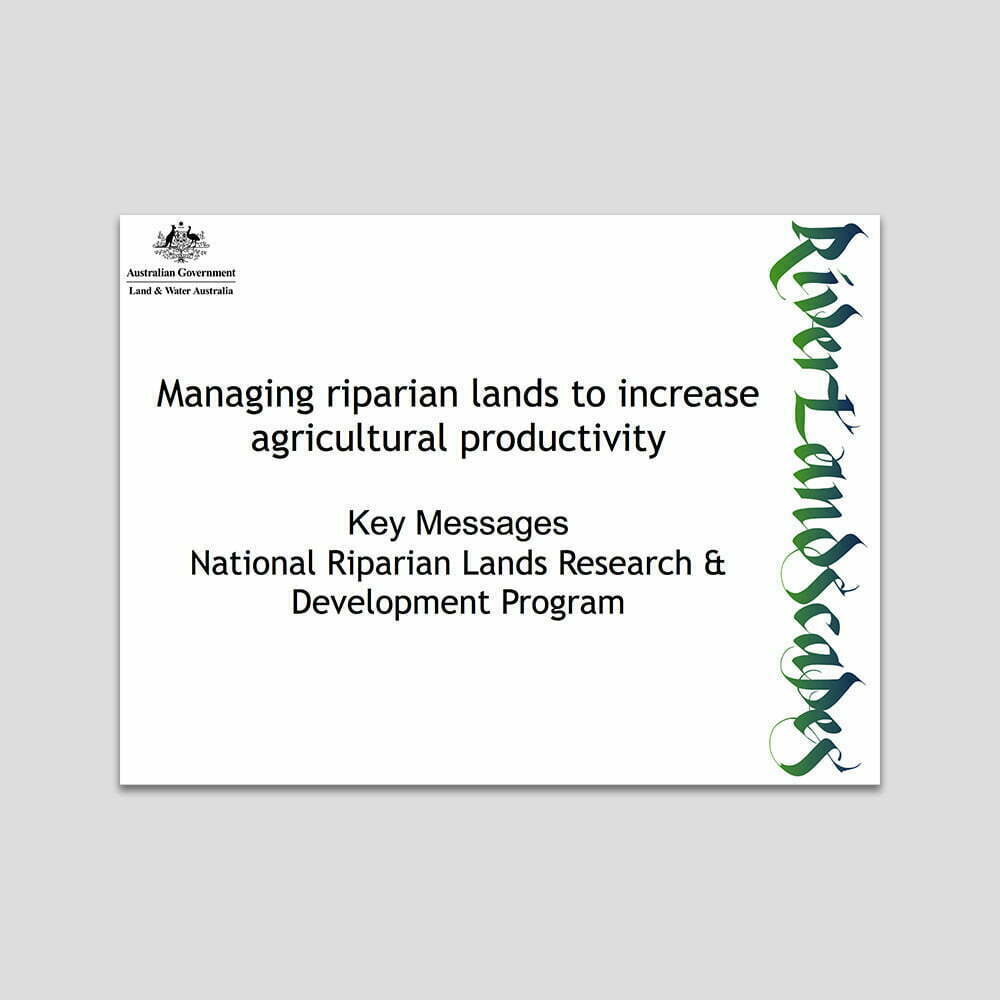
Powerpoint Presentation Template
A powerpoint presentation template you can use to reflect local riparian characteristics, by inserting photos and examples from your region. The powerpoint presentation has notes to accompany each slide, explaining the key point being made and how you might explain it to others.
Download the resource pack.
This resource pack is free but we rely on donations to keep sharing knowledge. Please click on the button below to download the pack, and we encourage you to donate as much or as little as you are able to. Your contribution gives us fuel to build future resources for you and others alike.